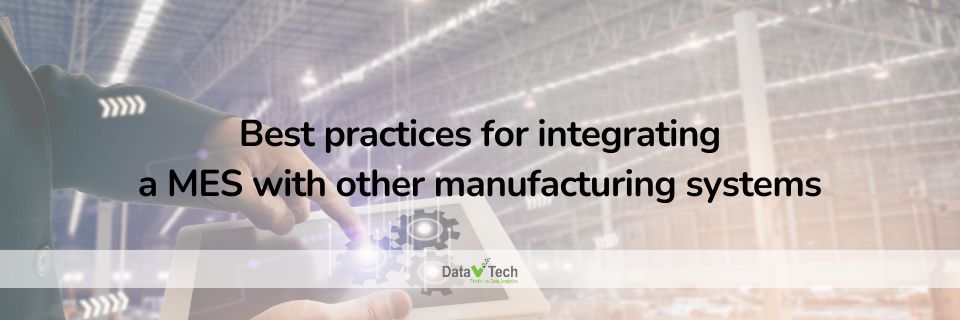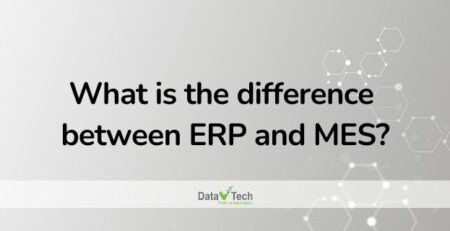Integrating a Manufacturing Execution System (MES) with other manufacturing systems is crucial for streamlining operations and optimizing productivity. However, the process requires careful planning and adherence to best practices to ensure seamless integration. In this article, discover the key best practices for integrating a MES with other manufacturing systems. From clearly defining integration requirements to fostering collaboration and communication, these practices will help manufacturers achieve efficient and effective integration, ultimately enhancing their manufacturing processes.
- Clearly define integration requirements
- Standardize data formats and protocols
- Plan and coordinate data mapping
- Implement robust data validation and synchronization mechanisms
- Establish master data management practices
- Conduct thorough testing
- Develop error handling and exception management processes
- Establish data governance and security measures
- Maintain documentation and change management
- Foster collaboration and communication
Clearly define integration requirements
Start by defining the integration requirements and objectives. Identify the data subject to the MES and ERP systems exchange, such as production orders, inventory levels, material needs, and quality data. Define the frequency and format of data exchange.
Standardize data formats and protocols
Ensure the MES and ERP systems use standardized data formats and communication protocols to facilitate smooth integration. Common standards like XML, JSON, or EDI (Electronic Data Interchange) are often used for data exchange. Similarly, standard communication protocols like RESTful APIs or web services can simplify integration.
Plan and coordinate data mapping
Create a data mapping plan to ensure that data elements from the MES and ERP systems align correctly during integration. Identify corresponding fields, data structures, and naming conventions for accurate data transfer. Develop a mapping document that clearly outlines the data mappings and transformations.
Implement robust data validation and synchronization mechanisms
Establish data validation mechanisms to ensure data integrity and consistency between the MES and ERP systems. Implement validation checks for data accuracy, completeness, and consistency during data exchange. Additionally, synchronize data in real-time or defined intervals to maintain up-to-date information across systems.
Establish master data management practices
Implement effective master data management practices to ensure consistent and accurate master data between the MES and ERP systems. Develop processes to manage and synchronize critical master data elements, such as product definitions, bills of materials (BOM), work center data, and employee records.
Conduct thorough testing
Prioritize comprehensive testing of the integration between the MES and ERP systems. Test data transfer, synchronization, and validation processes in different scenarios and under various conditions. Conduct integration testing to verify the accuracy and reliability of the integration before going live.
Develop error handling and exception management processes
Establish error handling and exception management processes to address data synchronization errors, communication failures, or other issues that may arise during integration. Implement logging and notification mechanisms to track and resolve integration-related errors promptly.
Establish data governance and security measures
Ensure data governance and security measures are in place to protect sensitive information during integration. Define access controls, encryption protocols, and data privacy practices. Comply with relevant regulatory requirements, such as data privacy laws (e.g., GDPR), to maintain data security and confidentiality.
Maintain documentation and change management
Document the integration architecture, configurations, and processes for future reference and maintenance. Establish change management practices to handle updates, upgrades, or modifications to the MES or ERP systems. Maintain a change log and conduct impact assessments to minimize disruptions during system changes.
Foster collaboration and communication
Encourage collaboration and effective communication between the MES and ERP systems integration teams. Foster a shared understanding of integration goals and actively engage stakeholders from both systems to ensure successful integration.
Integrating a MES with other manufacturing systems is a complex undertaking that demands meticulous planning and execution. By following the best practices outlined in this article, manufacturers can pave the way for a successful integration that improves operational efficiency, data accuracy, and overall productivity. A clear definition of integration requirements, standardization of data formats and protocols, thorough testing, and robust data validation mechanisms are essential components of a well-integrated system. Maintaining documentation, establishing change management practices, and fostering collaboration between teams contribute to a smooth and effective integration process. By implementing these best practices, manufacturers can unlock the full potential of their MES integration, leading to enhanced manufacturing processes and improved business outcomes.
Book a free consultation with our experts today to find the perfect MES solution for your business











